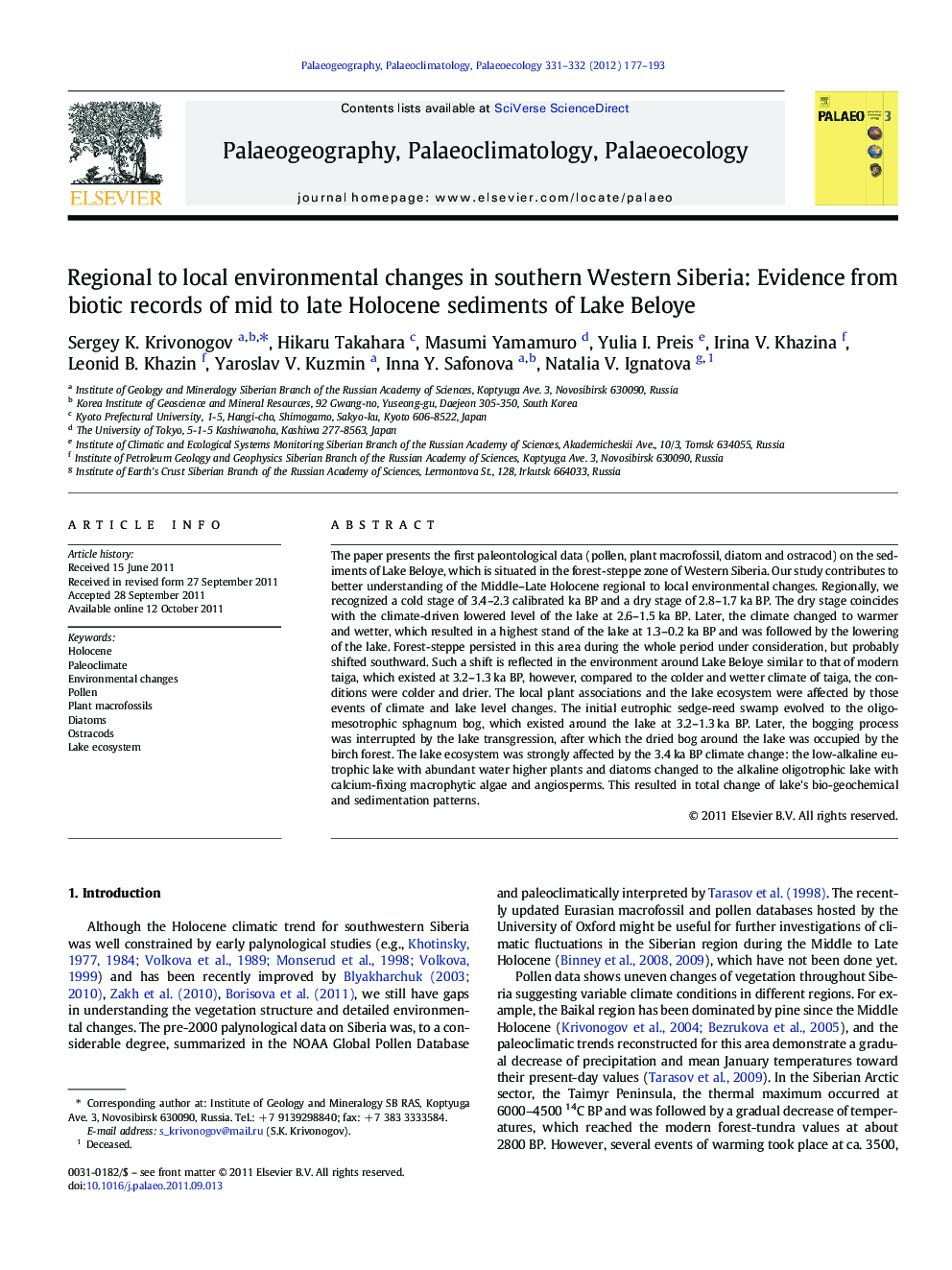| Article ID | Journal | Published Year | Pages | File Type |
|---|---|---|---|---|
| 4466937 | Palaeogeography, Palaeoclimatology, Palaeoecology | 2012 | 17 Pages |
The paper presents the first paleontological data (pollen, plant macrofossil, diatom and ostracod) on the sediments of Lake Beloye, which is situated in the forest-steppe zone of Western Siberia. Our study contributes to better understanding of the Middle–Late Holocene regional to local environmental changes. Regionally, we recognized a cold stage of 3.4–2.3 calibrated ka BP and a dry stage of 2.8–1.7 ka BP. The dry stage coincides with the climate-driven lowered level of the lake at 2.6–1.5 ka BP. Later, the climate changed to warmer and wetter, which resulted in a highest stand of the lake at 1.3–0.2 ka BP and was followed by the lowering of the lake. Forest-steppe persisted in this area during the whole period under consideration, but probably shifted southward. Such a shift is reflected in the environment around Lake Beloye similar to that of modern taiga, which existed at 3.2–1.3 ka BP, however, compared to the colder and wetter climate of taiga, the conditions were colder and drier. The local plant associations and the lake ecosystem were affected by those events of climate and lake level changes. The initial eutrophic sedge-reed swamp evolved to the oligo-mesotrophic sphagnum bog, which existed around the lake at 3.2–1.3 ka BP. Later, the bogging process was interrupted by the lake transgression, after which the dried bog around the lake was occupied by the birch forest. The lake ecosystem was strongly affected by the 3.4 ka BP climate change: the low-alkaline eutrophic lake with abundant water higher plants and diatoms changed to the alkaline oligotrophic lake with calcium-fixing macrophytic algae and angiosperms. This resulted in total change of lake's bio-geochemical and sedimentation patterns.
► The 3.4–2.3 cold and 2.8–1.7 ka BP dry stages were in south Western Siberia. ► Lake Beloye dropped at 2.6–1.5 and rose at 1.3–0.2 ka BP due to climate changes. ► Environment similar to taiga (colder but drier than now) was at 3.2–1.3 ka BP. ► Climate change strongly affected local vegetation and lake ecosystem.
